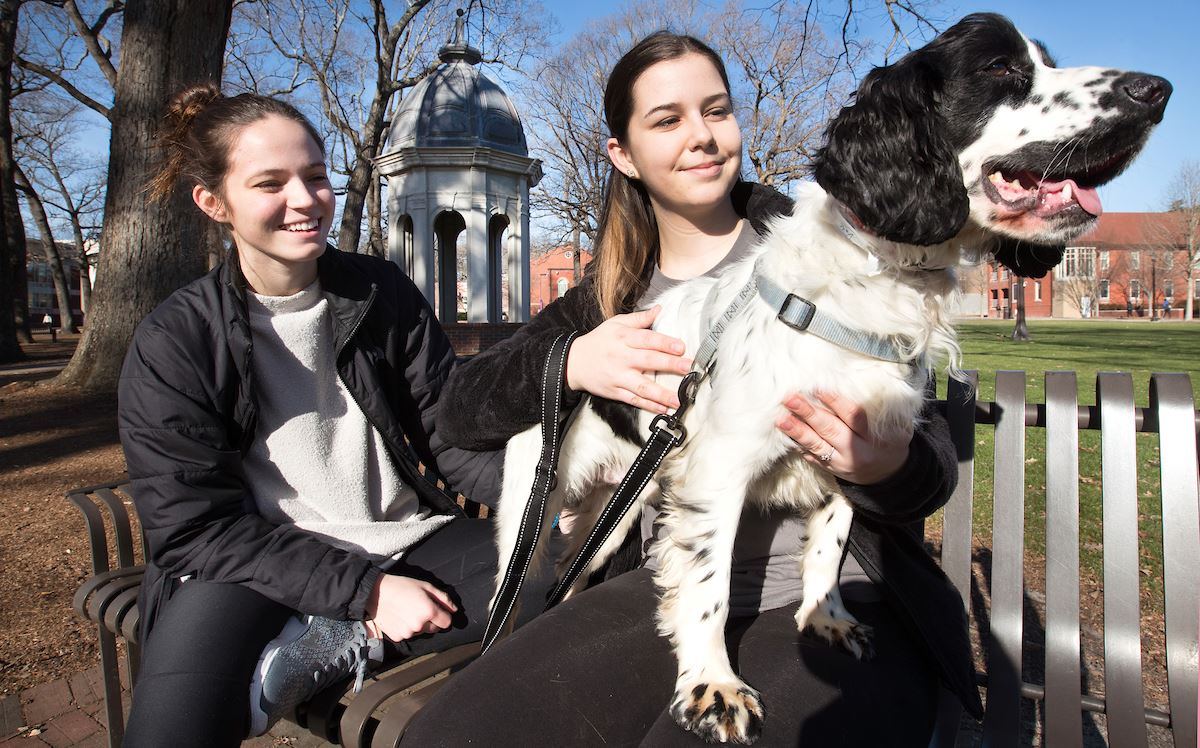News, ideas & inspiration from industry leaders

Cool Collab: ECU’s Shelter Dog Walking Program
Since 2016, the Department of Kinesiology at East Carolina University has partnered with Pitt County Animal Services on a shelter dog walking class. The popular service-learning course aims to empower students to become active citizens and increase their fitness levels, while the dogs get exercise and the shelter gains positive exposure in the community. Read on for a quick overview of how the program works and tips for starting something similar. For a deeper dive, listen to the recorded webinar (just 30 minutes!), one of many in The Association’s Innovation Bank of bright ideas, research and inspiration from your colleagues in the field.
Course Basics
The set-up of the fitness walking class, offered year-round, is pretty simple. The course is limited to ten students who walk an average of about 2 ¼ miles per session, supplemented with written reflections, lectures and online quizzes related to physical activity and health. And of course, they learn and hone their dog handling and walking skills. “Over the years, we’ve added information about caring for and about shelter dogs,” says Melanie Sartore-Baldwin, ECU’s Associate Professor, Department of Kinesiology.
Challenges
One of the biggest challenges Sartore-Baldwin faces is vetting students for the course—they must be able to provide their own transportation to the shelter, have no classes scheduled right before or after and, most importantly, commit to attending all sessions. “They need to understand the dogs depend on them,” she says.
The class was modified due to COVID restrictions over the past year to incorporate social distancing measures. Some were easier than others, such as having students step to the side to allow others to pass when on walks. “There were a few issues that did arise as a result of the safety protocols,” says Sartore-Baldwin. “Some of the dogs were frightened by the masks, so students were instructed to distance themselves at least ten feet from other walkers if they needed to take masks off.”
Successes
Studies have shown a decline in physical activity among college students, while those enrolled in the program were getting 40 percent of the recommended daily physical activity during class time. In addition to these gains in physical fitness, there were unexpected successes. “Many students continue to volunteer at the shelter after the class is over,” says Sartore-Baldwin. Participants also reported a growing positive association with shelters and shelter dogs, with many myths busted, including the idea that “shelter dogs are broken.”
ECU has also conducted two important research studies on the dog walking program. One, a pilot study assessing experiences of university staff walking shelter dogs on their lunchbreaks, found participants benefited psychologically and physically. The second looked at the physical activity levels and experiences of students in the course, with one big takeaway that pairing service-learning curricula with physical activity curricula benefits multiple entities. In other words—this is a great way to develop relationships in your community.
Now You Try It
You are probably more than ever seeking opportunities to connect with the community in meaningful ways, and a walking collab may be just the thing. Sartore-Baldwin shares top tips for getting started:
- Reach out to your local college or university and ask if anyone there is doing research on human-animal interactions. This might be the sociology department or the psychology department. Don’t give up if there isn’t anyone doing such research! Other students or community members may want to start a program.
- Understand that many students have likely not been behind the scenes in a shelter before, so may not know they shouldn’t stick their hands in a kennel, or even the great variety in dog personalities and level of energy.
- Encourage open communications with the students. It’s important that they share if they are not comfortable working with a particular dog, and to share any behavioral/health observations about the dogs they’re walking.
Listen to the full webinar recording here.
Learn More
The Bark: Getting In Shape and Helping Shelter Dogs
The Association’s Innovation Bank
Research: Are Sleepovers & Field Trips Good for Dogs?
Photo: East Carolina University/Facebook


